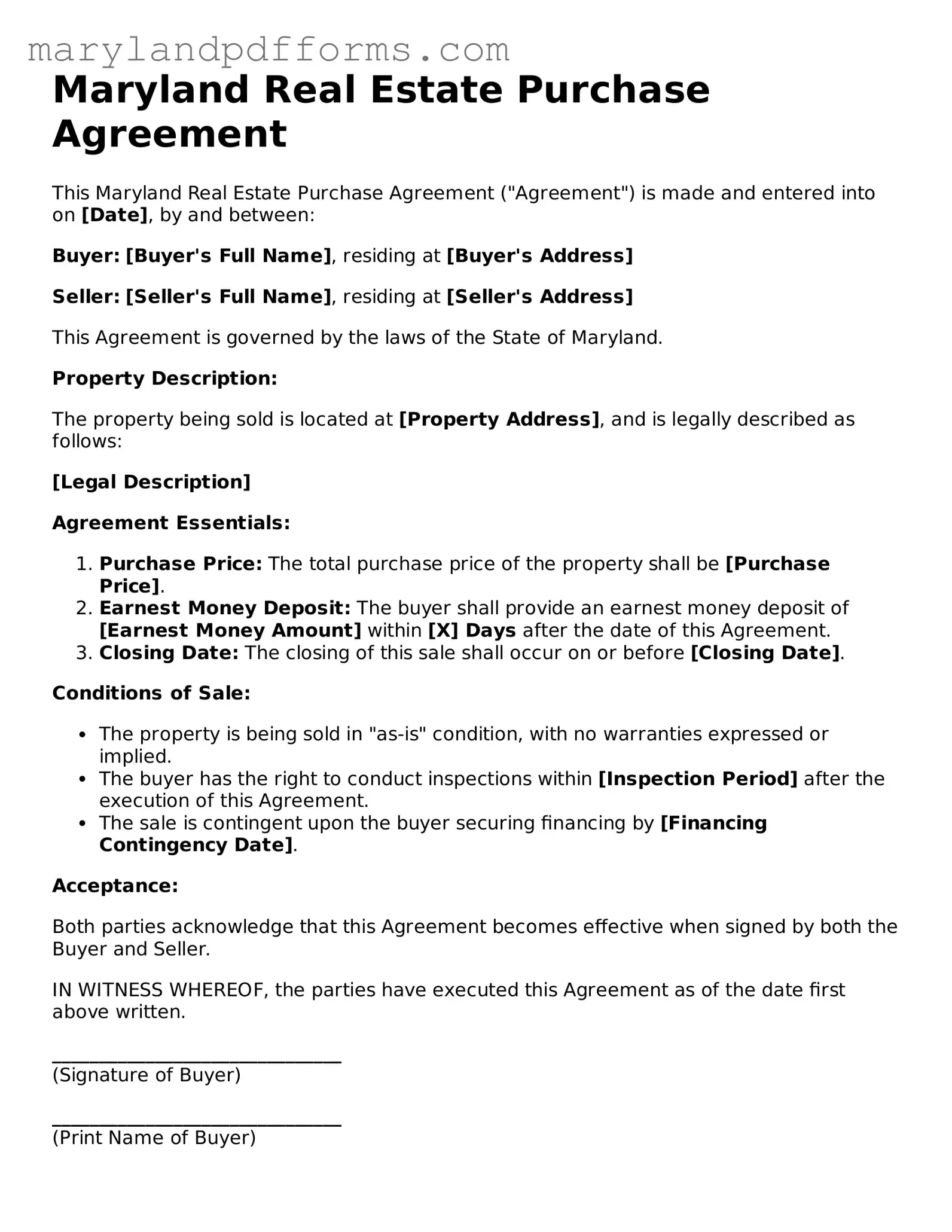What is a Maryland Real Estate Purchase Agreement?
The Maryland Real Estate Purchase Agreement is a legally binding document used when buying or selling property in Maryland. It outlines the terms and conditions of the sale, including the purchase price, financing details, and any contingencies. This agreement protects both the buyer and seller by clearly defining their rights and responsibilities during the transaction.
What should be included in the agreement?
A comprehensive Maryland Real Estate Purchase Agreement should include the following key elements:
-
Identification of the parties involved (buyer and seller)
-
Description of the property being sold
-
Purchase price and payment terms
-
Contingencies (e.g., financing, inspections)
-
Closing date and possession details
-
Disclosures and any warranties
Including these elements ensures clarity and reduces the risk of misunderstandings.
Can I modify the agreement?
Yes, the Maryland Real Estate Purchase Agreement can be modified. However, any changes must be agreed upon by both parties and documented in writing. It is advisable to consult with a real estate attorney or agent to ensure that modifications comply with Maryland law and do not inadvertently affect the validity of the agreement.
What happens if one party breaches the agreement?
If one party breaches the agreement, the other party may have several options. They can seek to enforce the contract, request specific performance (forcing the breaching party to fulfill their obligations), or pursue damages for any losses incurred. Legal action may be necessary, and consulting with an attorney is recommended to understand the best course of action.
Is an attorney required to complete this agreement?
While it is not legally required to have an attorney to complete a Maryland Real Estate Purchase Agreement, it is highly advisable. An attorney can provide guidance, ensure compliance with state laws, and help protect your interests. Real estate transactions can be complex, and having professional assistance can prevent costly mistakes.
How is the agreement executed?
The agreement is executed when both the buyer and seller sign the document. After signing, it is essential to provide copies to all parties involved. The agreement may also need to be notarized, depending on specific requirements. Once executed, the agreement becomes legally binding.
What should I do after signing the agreement?
After signing the Maryland Real Estate Purchase Agreement, the following steps should be taken:
-
Ensure all parties have received signed copies.
-
Complete any contingencies, such as inspections or securing financing.
-
Prepare for the closing process, including reviewing closing documents.
-
Communicate regularly with your real estate agent or attorney.
Staying organized and proactive will help facilitate a smooth transaction.
